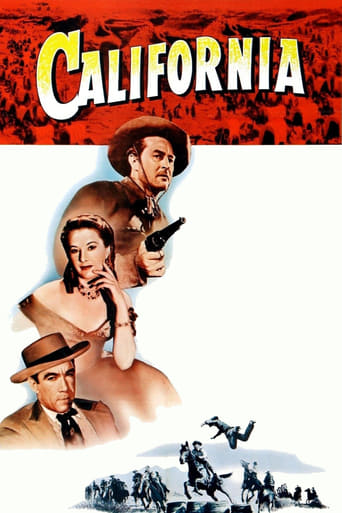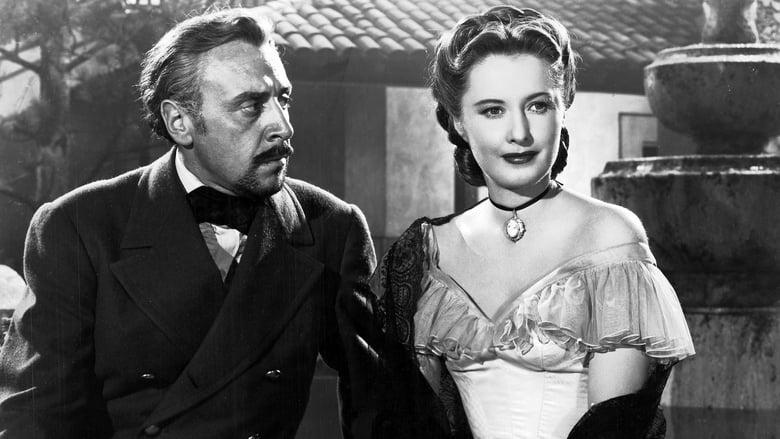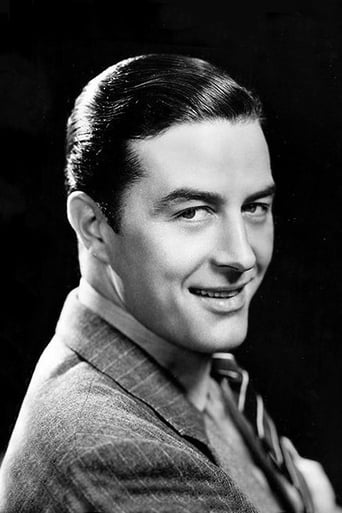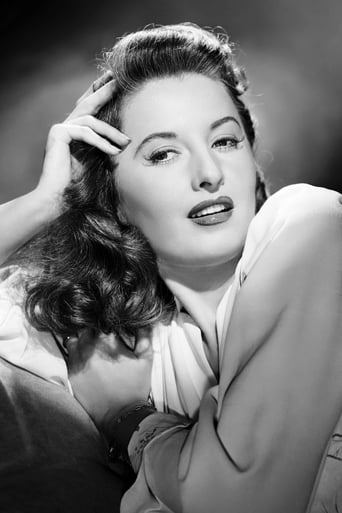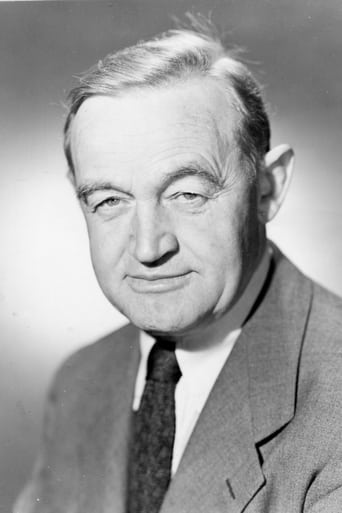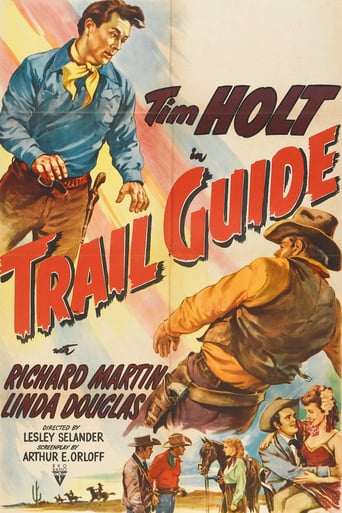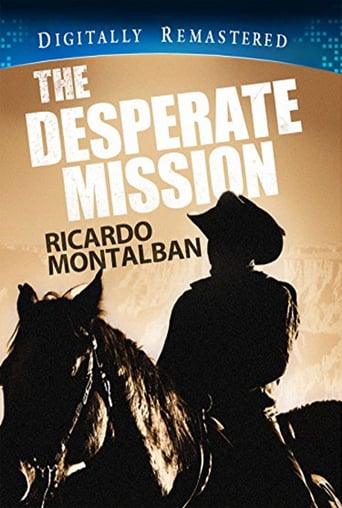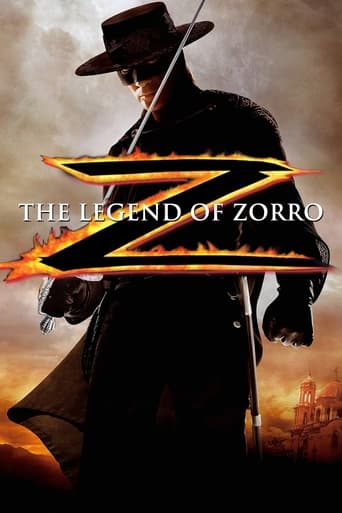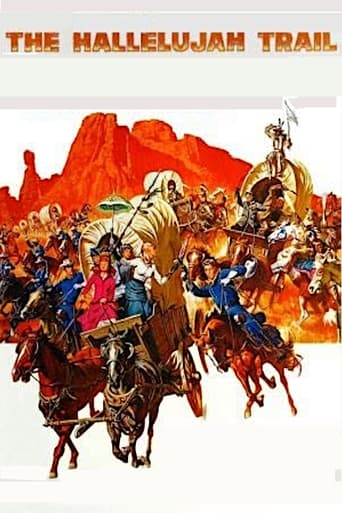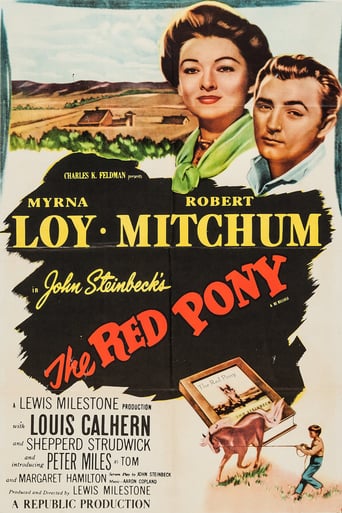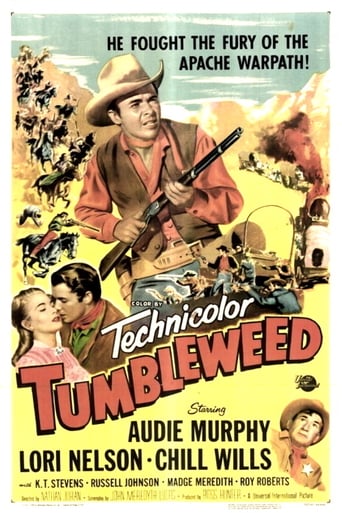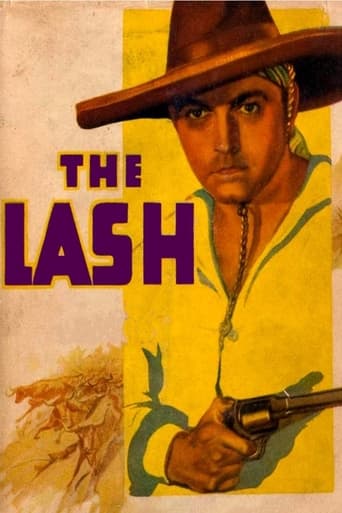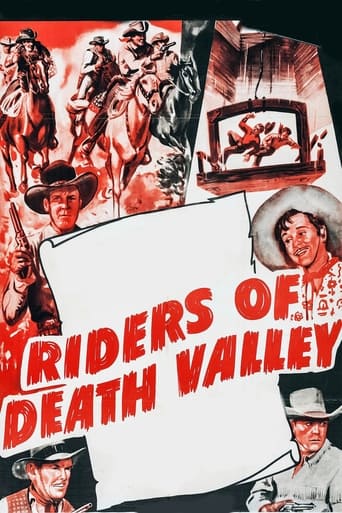California (1947)
"Wicked" Lily Bishop joins a wagon train to California, led by Michael Fabian and Johnny Trumbo, but news of the Gold Rush scatters the train. When Johnny and Michael finally arrive, Lily is rich from her saloon and storekeeper (former slaver) Pharaoh Coffin is bleeding the miners dry. But worse troubles are ahead: California is inching toward statehood, and certain people want to make it their private empire.
Watch Trailer
Cast


Similar titles
Reviews
How sad is this?
Fun premise, good actors, bad writing. This film seemed to have potential at the beginning but it quickly devolves into a trite action film. Ultimately it's very boring.
This is a must-see and one of the best documentaries - and films - of this year.
Through painfully honest and emotional moments, the movie becomes irresistibly relatable
At first, it's a "How the West Was Won" journey of settlers heading to California (with a banjo on their knee), then it's about the gold rush. then a gambling hall, and finally a political squabble over statehood and impending civil war. And as much as it looks like a Cecil B. DeMille epic, it isn't, directed instead by John Farrow.But, oh, what a pleasure it is to look at, starting off with a travelogue like prologue with an E.Y. Harburg song. Barbara Stanwyck makes her entrance being tossed out of town by the proper ladies and gentlemen and reluctantly being picked up by the wagon train lead by Ray Milland. He doesn't want her on it, but feisty Barry Fitzgerald sympathizes with her and takes her along in his wagon. Then, news of gold breaks, everybody scrams, and Milland and Fitzgerald are left to themselves, surrounded by the junk yard of the journeyer's furniture left behind, the west coast's first garbage dump.It continues with an obviously dubbed Stanwyck singing a song in a gambling hall she's purchased, getting involved with ruthless Albert Dekker and alternately insulting and defending Milland while secretly supporting Fitzgerald for senator, Dekker's rival. It's the last segment that's the most interesting, a fictionalized vision of early California before swimming pools and movie stars, not to mention ski resorts, Hollywood signs, freeways and governators.Stanwyck gets to wear some bewitching gowns by Edith Head and is alternately tough, tender and tempestuous. Wasted in a tiny role, Anthony Quinn is nevertheless handsome in his brief dance with Stanwyck, historically important to see two legendary stars together. They would share more scenes in 1953's melodramatic "Blowing Wild". Milland is grizzled enough to take away the image of him in tailored suits from past movies (even though the same year he got his ear pierced by Marlene Dietrich in "Golden Earings") while Fitzgerald gives a performance filled with wisdom, heart, and humor.Colorfully filmed, this is still an interesting account of the settling of a land once wild, now overcrowded, yet still filled with beauty where cities have not yet risen.
This is a case where I feel like other reviewers have watched a different movie called "California" than the one I saw. The picture I enjoyed was a top-notch "A" western with an excellent cast, gorgeous Technicolor cinematography, spectacular California scenery, lively action, good pacing, and an intelligent, adult story.At the top of the cast Ray Milland, Barbara Stanwyck, and Barry Fitzgerald, were at the peak of their careers. All three had garnered Academy Award honors within the past few years before "California's" early 1947 release. Milland was coming off his best actor award for Lost Weekend (1945), while Fitzgerald won best supporting actor for Going My Way (1944) and also got a best actor nomination for the same role! Stanwyck, a perennial bridesmaid of the Academy had received best actress nominations for Ball Of Fire (1941) and Double Indemnity (1944). "California" is a good showcase for their talents, each doing what he or she did best -- Ray the mild-mannered but hard-edged tough guy, Barry the lovable Irishman, and Barbara the hard broad who may or may not be hiding a heart of gold. Good support and stalwart villainy is provided by George Coulouris and Albert Dekker with a large cast of other supporting players and extras.Some people can't picture Ray Milland as an appropriate western lead because of his British accent, even though it had became slight by the late 1940's when he had be living in the United States for two decades. But lots of people in the West would have had British and other foreign accents. Remember, we were and still are a nation of immigrants. Besides which Ray was imminently qualified to play westerns by his real life experiences. Having served several years in a crack British cavalry regiment in the 1920's, he was an expert horseman, and it shows by the way he sits a steed in "California". And he certainly knew which end of a gun the bullets came out of. A crack marksman, he helped his regiment win several prestigious shooting matches in his army days. Interestingly, he actually plays a professional trick shot artist in another western, Copper Canyon (see my review).John Farrow's usual efficient direction and Eda Waren's editing keep the story moving along at a sharp pace. The script by Frank Butler and Theodore Strauss provides an intelligent, adult story with literate dialog. It gives an accurate, compelling picture of the California gold rush and the gold fever gripping immigrants to the Pacific Coast, as well as the movement for California statehood, a plot by the baddies for an armed overthrow of the government, and a torrid love triangle. As the intense, dark melodramas now known as film noir were at the height of their popularity when this western was filmed, the script endows the principles of the love triangle, Milland, Stanwyck, and Coulouris, with shady pasts. Milland's character, it turns out has deserted the Army. Stanwyck has been thrown out of every town she ever parked in for being -- shall we say charitably -- a floozy. Coulouris, villain enough as it is, has an even darker past as a slave ship captain. And he is now going slowly off his nut remembering the cries of the chained slaves and his fears they would rise up and get him. Dekker, occasionally a leading man or second lead, but more often a polished villain, is wasted here as Coulouris's former first mate and brutish henchman. Since Coulouris is always a bit over the top, perhaps "California" would have been better served if Dekker had had his role.The script and Farrow's direction gives us just the right blend of dramatics and action. A rousing, old-time, full-bodied score by Victor Young helps move it along. Unlike other reviewers, I found the frequent outbursts of singing by both on-screen characters and an unseen chorus an asset to the picture, adding life and color and even historical accuracy. Some in this history challenged generation may not realize that in the days before people had television, computers, radio, movies, or even phonographs, they had to entertain themselves. They sang all the time, walking down the street, in their yards, in barber shops, at socials, around campfires (as in "California"), and in saloons. Even the meanest of saloons could usually scratch up some kind of band.The costumes, sets, firearms, gun leather, lamps and other accouterments in "Callifornia" show an unusual degree of historical accuracy for a western of this era. No one has a repeating rifle, all muzzle loaders or crude breech loaders. Cap and ball revolvers are used in the closeups at least -- never mind they were not the exact models for 1849. You other gun nuts: in how many other movies have you seen a Hall breech loader? Good effort in this department.Ray Rennahan, who did the camera work, gets credit for the unusually fine color cinematography, but with Natalie Kalmus on board as the Techniclor consultant, superb color was insured. The Technicolor Corporation required a consultant on every movie using their patented process, and Mrs. Kalmus, ex-wife of the inventor of Technicolor, was usually it. She was known around the studios as a bossy, irritating old dame, who interfered in set designs, camera set-ups, costume color and materials, prop selection, and virtually every other aspect of a color filming. She must, nevertheless, have known what she was doing. Every picture with her name on it will have muted, perfectly co-ordinated, precisely lighted, and generally superior color. After all, the studio technicians of the 1940's, as skilled as they were in black and white filming, had little experience with color. They actually needed a Natilie Kalmus, like it or not."California" in an A-1 Technicolor western, a visual treat and smooth, exciting entertainment from Hollywood's finest era.
This film tries so hard to be a sprawling epic, and it ends up just sprawling. The hero barely registers as a blip on the radar, Barbara Stanwyck turns in a bad impression of a heterosexual heroine, the villain is a cardboard stereotype, and Barry Fitzgerald's character is too saintly to be believable with this thankless script. This western even features a stand-in horse: a photo mounted on cardboard (in one of the first scenes). It never really gets much better than that.
In this movie John Farrow shows the great director he was. The camera work is exceptional, with scenes lasting more than 4 minutes filmed in just one take!. Although there are several of this scenes in the movie, there are other aspects to comment also. The actor's direction is superb, obtaining the most of all of them, in particular the performance of George Colouris (the villain) is outstanding. Moreover, this is not the typical western; the plot shifts unexpectedly from the line one assumes it will follow, to a very different one, and the movie maintains its coherence perfectly. A real gem.

